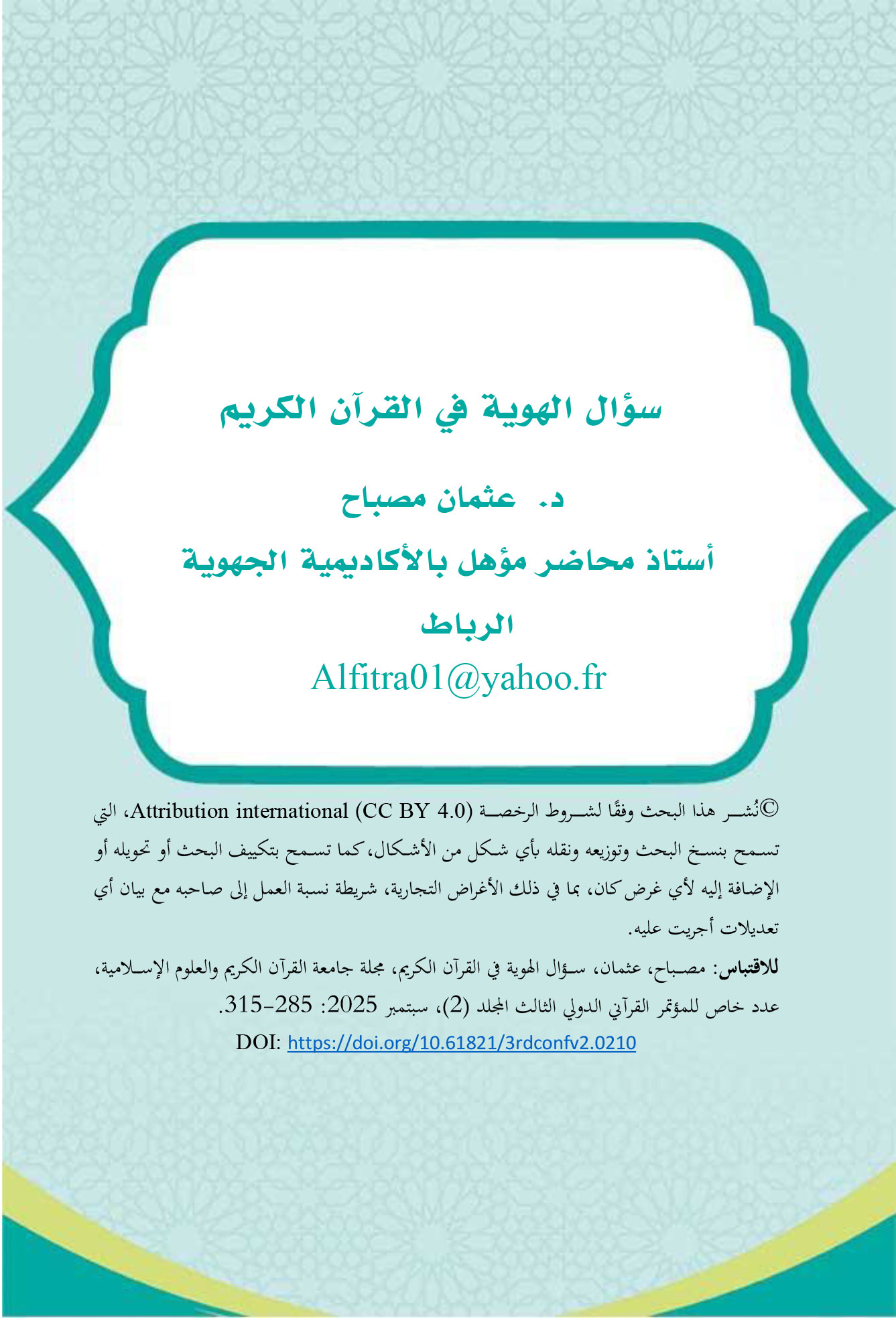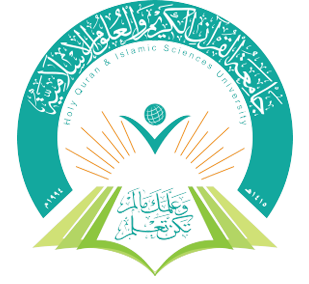A Matter of Identity in the Holy Quran
DOI:
https://doi.org/10.61821/3rdconfv2.0210Keywords:
Identity, Caliphate (deputy), Ikhtilaf (dispersion), Fitra (First position), Mutrafun (Elites).Abstract
This study explores the Qur'anic answer to the question of identity, a question that has become increasingly urgent in light of contemporary affiliations that have imprisoned tribes and nations within ethnic, cultural, and political categories. These categories have plunged humanity into a maze of tensions and conflicts, undermining faith in universal human ideals and the international institutions they embrace, given their failure to ensure a just partnership among all peoples. Drawing on the basic Qur'anic terms in their original contexts and the pioneering historical models in the stories of the prophets, this study uses the concepts of "caliphate" and "dispersion" as its analytical framework. This article identifies two main forms of identity: authentic identity, bestowed by God, and artificial identity, constructed by the powerful to subjugate the weak within a pagan system. In this system, innate loyalty to the Lord of the Worlds is replaced by an exclusive, aggressive loyalty, similar to modern concepts of nationalism and patriotism. The struggle of the prophets was, in reality, against those who monopolized the divine blessing of the vicegerency of the earth, to which man was nominated as a human being. The prophets aimed to liberate people from that pagan framework reinforced by mythical narratives, through a statement that was, in reality, nothing more than a divine statement of man’s innate identity, which is the identity that unites all peoples and requires just partnership. For this reason, the Qur’an came as a narration of that blessed struggle connected to a time when people were one nation.
Downloads

Downloads
Published
Issue
Section
License
Copyright (c) 2025 Journal of the University of Holy Quran and Islamic Sciences

This work is licensed under a Creative Commons Attribution 4.0 International License.
©This article is an open access article distributed under the terms and conditions of the Creative Commons Attribution (CC BY) license












